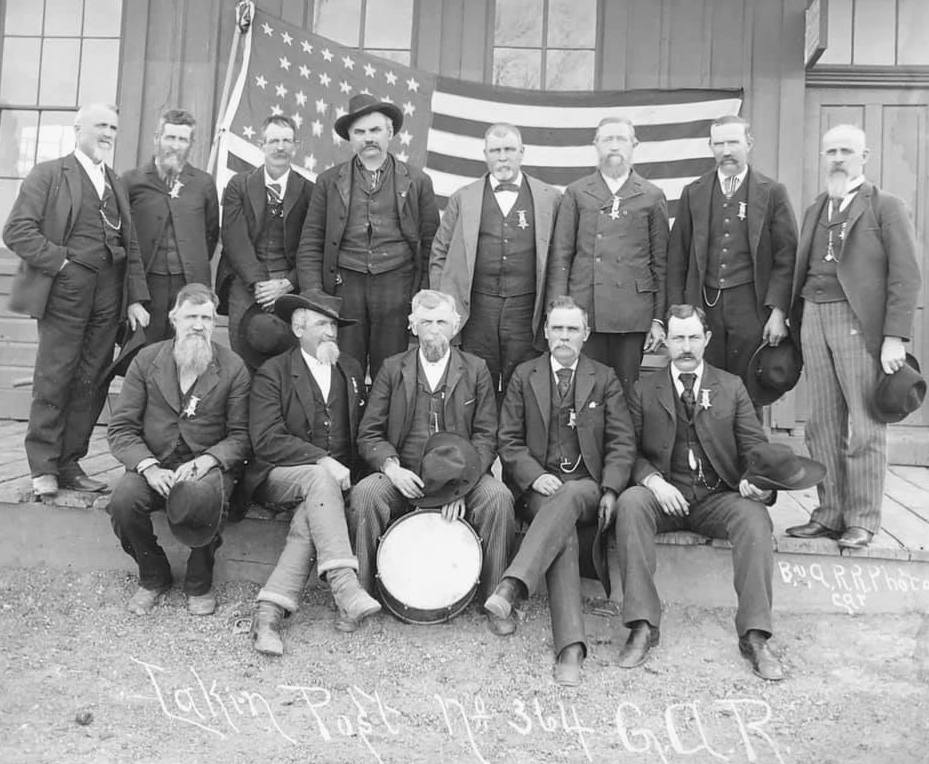
Among the many accomplishments credited to the Grand Army of the Republic (G.A.R.) is the designation of Memorial Day as a yearly tradition. By the late 1860s, various communities had already been holding springtime tributes to fallen soldiers of the Civil War by decorating their graves with flowers and reciting prayers. On May 5, 1868, General John A. Logan, national commander-in-chief of the G.A.R., issued the order that established Decoration Day as May 30, and Logan called upon G.A.R. members to make the May 30 observance an annual occurrence. The first large ceremony was held that year at Arlington National Cemetery where General James Garfield gave a speech, and 5,000 participants decorated the graves of the 20,000 Civil War soldiers buried there with small American flags. By the end of the 19th century, Memorial Day ceremonies were being held on May 30 throughout the nation. After World War I, the day was expanded to honor soldiers who died in all American Wars, but it was not until 1971 that Congress declared Memorial Day a national holiday. At that time, the last Monday of May was designated as the official day of observance.
The Grand Army of the Republic was founded in 1866 as a fraternal organization composed of Civil War veterans who served in the Union Army, Union Navy and the Marines. The organization began as an outlet for fellowship between those with shared experiences but grew to be the most powerful single-issue political lobby of the late 19th century promoting voting rights for black veterans, advocating for federal pensions for veterans, supporting Republican candidates, and helping to elect five U.S. presidents from its own membership. G.A.R. was the largest of all the Union Army veterans’ organizations with a membership of 410,000 at its peak in 1890. At one time, the G.A.R. in Kansas had over 19,000 members in 478 posts.
The Lakin Post #364 of the G.A.R. was organized September 8, 1885. According to the Sept. 12, 1885 Advocate, over 5,000 people attended the affair. About 25 members of the Garden City G.A.R. Post arrived by train in the afternoon accompanied by their wives, daughters, and sweethearts. Also onboard were a large number of Garden City residents and the Garden City Brass Band which had the honor of being the first band to ever play on the streets of Lakin. While the ladies and citizens were escorted to the Commercial House, the band and G.A.R. boys formed in line and marched to the town hall where Judge H.M. Wheeler of Garden City took charge and proceeded to muster in the Lakin post. Thirteen charter members were included on the muster roll. Following the election of officers, the men formed again and marched over to the hotel where they joined those waiting there for a sumptuous supper served up by the hotel’s genial hostess, Amy Loucks. Everyone returned afterwards to the town hall which was packed by locals and people from surrounding towns. The new officers were installed, and the audience sang, “Marching Through Georgia.” A grand ball followed with the crowd dancing until the wee hours of the morning.
Lakin’s G.A.R. was a provider of entertainment, source of local charity, and organizer of patriotic events including the annual Decoration Day procession and services. The last member of Lakin’s post was Captain William Barringer Logan, no apparent relation to G.A.R. Commander-in-Chief John A. Logan. When William died on September 16th, 1926 at 90 years of age, flags in Lakin were placed at half-mast in recognition of the service he had given to his country.
The national G.A.R. was dissolved in 1956 following the death of its last member, Albert Woolson of Minnesota who is also widely considered the last surviving veteran of the Civil War. The Sons of Union Veterans of the Civil War is the legal successor to the Grand Army of the Republic.
SOURCES: U.S. Department of Veterans Affairs; Kansas State Historical Society; Diggin’ Up Bones by Betty Barnes; History of Kearny County Vol. 1; Sept. 12, 1885 and May 4, 1893 Advocate; Sept. 24, 1926 Lakin Independent; Wikipedia; History.com; Ancestry.com, and museum archives.
